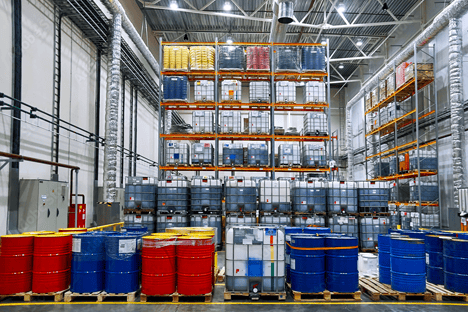Maximizing Equipment Performance through Effective Lubrication
Today we’re diving into the importance of building and maintaining a lube room. As a fuel and lubricant supply company, we’ve learned firsthand how crucial it is to have a dependable lubricant provider. IFM has guided several clients through the process of constructing an efficient lube room and advised them on selecting the most suitable lubricants for their specific applications. Our clients know they can count on us to provide top-quality lubricants that ensure superior equipment performance. So let’s get into it and explore the key steps involved in creating an effective lube room.
Understanding the Lube Room
Your lube room is the designated space within your facility where all lubricants and associated equipment are stored, managed, and transferred to machinery. A lube room provides a central location for all lubrication-related activities, ensuring convenient access to necessary supplies, and promoting an efficient workflow. Your lube room acts as the heart of an effective lubrication management system.
Building the Ideal Lube Room
-
Assessing Space And Layout Requirements
To build your ideal lube room, begin by determining the optimal location within your facility. Factors to consider are proximity to equipment, ease of access, and space allocation for equipment, storage, and work areas. Design an efficient workflow that aligns with the following Lubrication Life Cycle stages. To learn more about the Lubrication Life Cycle stages, check out this blog from our fluid management company, IFM.
-
Receiving Product From Your Supplier
When selecting your lubricants supplier, it’s important to ensure they have effective processes and procedures for maintaining product integrity. Petrochemical distributors often handle a range of products with varying additive packages, which can be incompatible and cause issues down the line. To safeguard against this, partner with a lubricants supplier that offers pre-filtered lubricants and conducts oil analysis to measure ISO 4406 fluid cleanliness. Doing so will help ensure that your new oil meets your OEM’s standards for quality and maximum performance.
-
Storage Of Lubricants
Select suitable storage solutions based on the types and packaging of lubricants you use. Proper containment, labeling, segregation, and rotation strategies ensure lubricants are easily identifiable and older stock is used first. This minimizes the risk of using expired or degraded lubricants, ensuring optimal equipment performance.
-
Transfer Of Oil To Equipment
Identify the appropriate dispensing equipment for accurate and clean oil transfers. Make sure you are utilizing equipment that minimizes the introduction of contaminants and ensures precise measurement. Incorporate filtration during the transfer process to maintain lubricant quality and prevent potential equipment damage.
-
Protecting Fluid In Equipment
Effective contamination control measures are crucial for maintaining fluid integrity. Implement proper sealing and breathers to prevent the ingress of contaminants into equipment. Regularly inspect and replace filters to keep fluids clean and avoid premature component wear.
-
Condition Monitoring & Fluid Conditioning
Implement condition monitoring practices to assess equipment performance and lubricant condition. By utilizing techniques like oil analysis and visual inspections, you can identify potential issues early on and take proactive maintenance measures. Additionally, consider fluid conditioning techniques such as filtration and dehydration to extend lubricant life and ensure optimal equipment protection.
Building and maintaining the ideal lube room is essential for maximizing your equipment’s performance with effective lubrication. By following the guidelines outlined above, you can establish a well-designed lube room that promotes an efficient workflow and protects your equipment from premature wear. Whether you need to design a lube room for your new facility or your existing lube room needs an overhaul, creating a functional lube room is an onerous task. That’s why partnering with a reputable and reliable petrochemical supplier and fluid management company is your best bet for a turnkey solution that maximizes efficiency.
Stay tuned to the GO blog for more valuable insights on equipment maintenance, lubrication best practices, and industry trends.
